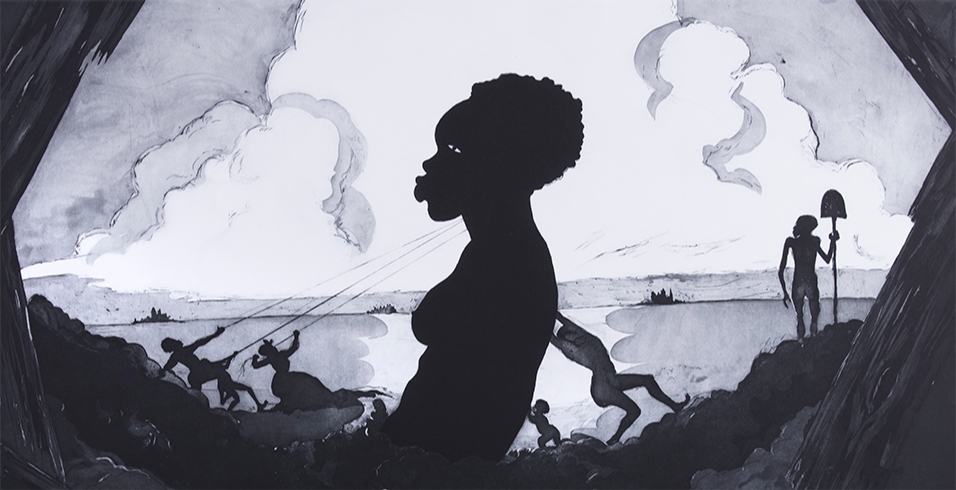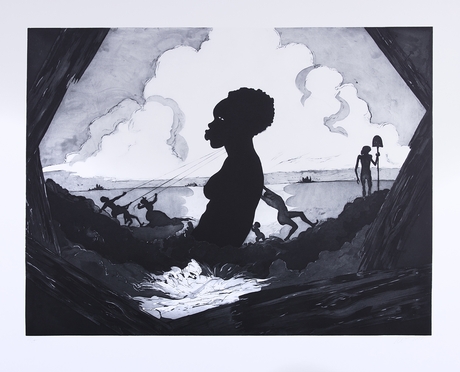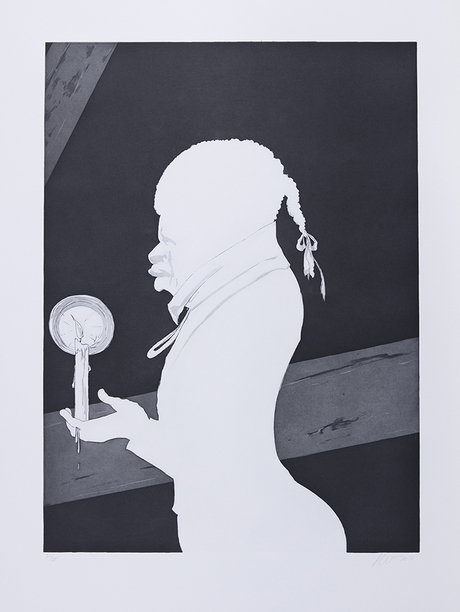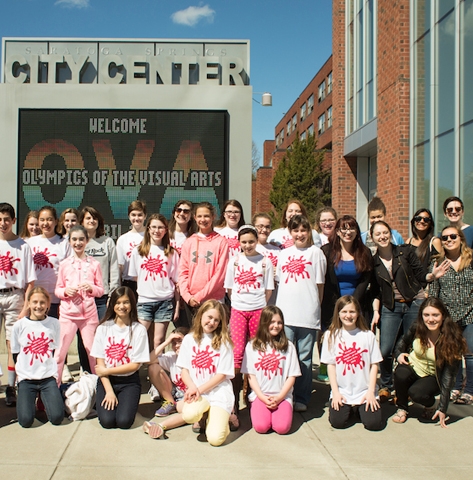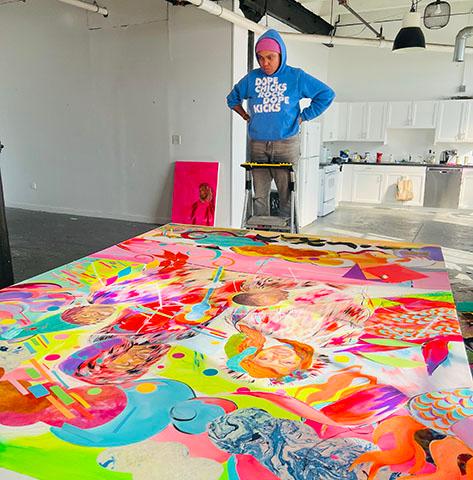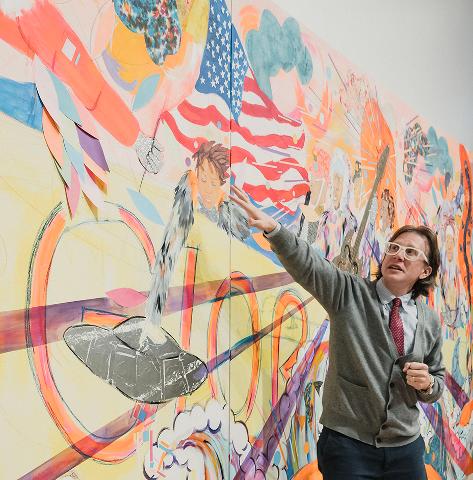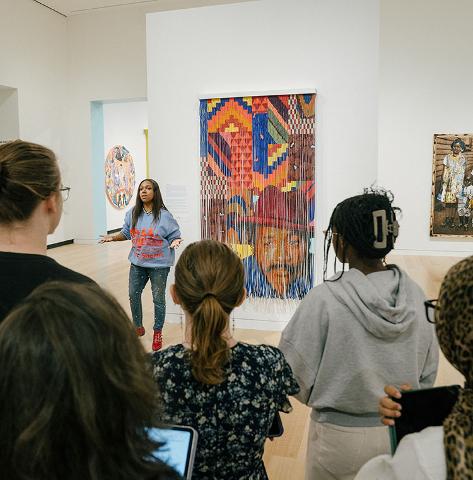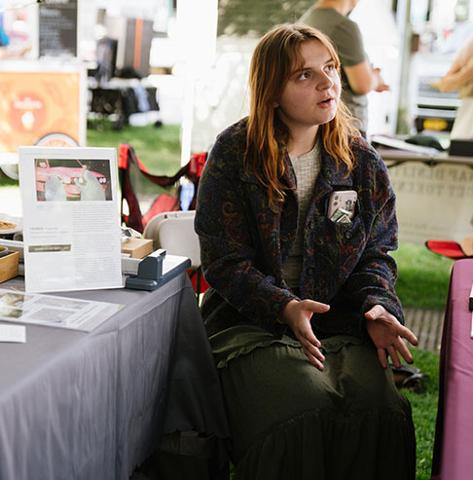John Bentham
I am happy to share a new set of contemporary prints that the Wellin has acquired in the last few months for its permanent collection. These images, in addition to other recent acquisitions, demonstrate how artists address and incorporate history in their works, providing commentary on both the past and our present moment.
Kara Walker’s triptych Resurrection Story with Patrons came out of an artist’s residency she held at the American Academy in Rome in 2016. The lush prints are all etchings, executed through a combination of techniques, including aquatint, sugar-lift, spit-bite, and drypoint, all of which lend a variety of tones and textures to the compositions.
The central panel of the triptych depicts a group of individuals and erecting a female figure (one can imagine a massive stone sculpture) depicted as a black silhouette against a bank of cumulus clouds that hover over an ocean vista with forested islands dotting the horizon. The scene calls to mind Easter Island and its enigmatic moai sculptures, along with Walker’s monumental female-headed sphinx made entirely of sugar and erected in 2014 in Brooklyn’s Domino Sugar Factory as part of the Creative Time-sponsored installation A Subtlety, or the Marvelous Sugar Baby. The dark vignette around the composition suggests the interior of a cave, but upon closer examination, appears as wooden planks, suggesting a mine entrance or driftwood. On either side of the central panel are depictions of figures in white silhouette against dark backgrounds containing wood planks forming angled crosses. Walker’s title refers to these figures as ‘patrons.’ They appear to resemble icons and paintings of the Renaissance and Baroque periods that depicted the wealthy patrons who commissioned artists to paint altarpieces for family chapels within Catholic churches, along with eighteenth-century colonial American diptychs and black paper silhouettes of the same period.
Conceived at a time when she was surrounded by the palimpsest that is Rome, Walker’s prints address the relevance of monuments and memorials “and the role such objects play in shaping collective experience,” along with the role that Christianity, with its tropes of redemption and martyrdom, played for enslaved peoples. According to the artist’s gallery, Sikkema Jenkins and Co., Walker created the prints at a time when she had the “time and distance to reflect on the spate of police killings of young black men, and the persistence of such events in the United States.” They are also certainly relevant in regards to conversations around the removal or maintaining of Confederate monuments in America. I would add that the central panel challenges the role of archaeology, excavations, interpretation, and pushes the viewer to question the significance invested in the resulting historical record.


